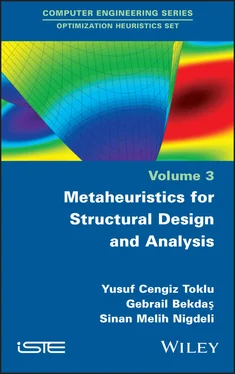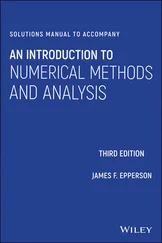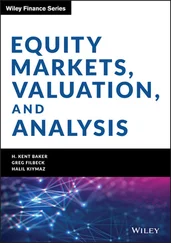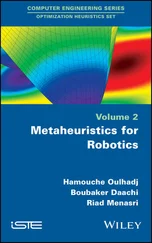Yusuf Cengiz Toklu - Metaheuristics for Structural Design and Analysis
Здесь есть возможность читать онлайн «Yusuf Cengiz Toklu - Metaheuristics for Structural Design and Analysis» — ознакомительный отрывок электронной книги совершенно бесплатно, а после прочтения отрывка купить полную версию. В некоторых случаях можно слушать аудио, скачать через торрент в формате fb2 и присутствует краткое содержание. Жанр: unrecognised, на английском языке. Описание произведения, (предисловие) а так же отзывы посетителей доступны на портале библиотеки ЛибКат.
- Название:Metaheuristics for Structural Design and Analysis
- Автор:
- Жанр:
- Год:неизвестен
- ISBN:нет данных
- Рейтинг книги:4 / 5. Голосов: 1
-
Избранное:Добавить в избранное
- Отзывы:
-
Ваша оценка:
- 80
- 1
- 2
- 3
- 4
- 5
Metaheuristics for Structural Design and Analysis: краткое содержание, описание и аннотация
Предлагаем к чтению аннотацию, описание, краткое содержание или предисловие (зависит от того, что написал сам автор книги «Metaheuristics for Structural Design and Analysis»). Если вы не нашли необходимую информацию о книге — напишите в комментариях, мы постараемся отыскать её.
Metaheuristics for Structural Design and Analysis — читать онлайн ознакомительный отрывок
Ниже представлен текст книги, разбитый по страницам. Система сохранения места последней прочитанной страницы, позволяет с удобством читать онлайн бесплатно книгу «Metaheuristics for Structural Design and Analysis», без необходимости каждый раз заново искать на чём Вы остановились. Поставьте закладку, и сможете в любой момент перейти на страницу, на которой закончили чтение.
Интервал:
Закладка:
194 188
195 189
196 190
197 191
198 192
199 193
200 195
201 196
202 197
203 199
204 200
205 201
206 202
207 203
208 204
209 205
210 206
211 207
212 208
213 209
214 210
215 211
216 212
217 213
218 214
219 215
220 216
221 217
222 218
223 219
224 221
225 222
226 223
227 224
228 225
229 226
230 227
231 228
232 229
233 230
234 231
235 232
To Güler Toklu
Optimization Heuristics Set
coordinated by
Nicolas Monmarché and Patrick Siarry
Volume 3
Metaheuristics for Structural Design and Analysis
Yusuf Cengiz Toklu
Gebrail Bekdaş
Sinan Melih Nigdeli

First published 2021 in Great Britain and the United States by ISTE Ltd and John Wiley & Sons, Inc.
Apart from any fair dealing for the purposes of research or private study, or criticism or review, as permitted under the Copyright, Designs and Patents Act 1988, this publication may only be reproduced, stored or transmitted, in any form or by any means, with the prior permission in writing of the publishers, or in the case of reprographic reproduction in accordance with the terms and licenses issued by the CLA. Enquiries concerning reproduction outside these terms should be sent to the publishers at the undermentioned address:
ISTE Ltd
27-37 St George’s Road
London SW19 4EU
UK
www.iste.co.uk
John Wiley & Sons, Inc.
111 River Street
Hoboken, NJ 07030
USA
www.wiley.com
© ISTE Ltd 2021
The rights of Yusuf Cengiz Toklu, Gebrail Bekdaş and Sinan Melih Nigdeli to be identified as the authors of this work have been asserted by them in accordance with the Copyright, Designs and Patents Act 1988.
Library of Congress Control Number: 2021932796
British Library Cataloguing-in-Publication Data
A CIP record for this book is available from the British Library
ISBN 978-1-78630-234-2
Preface
This book is about the use of metaheuristic algorithms on two different but closely related subjects, namely structural design and structural analysis. Indeed, these subjects are different, but every engineer knows that structural design involves structural analysis, most of the time applied many times in order to finish the design.
Applications of metaheuristic algorithms on design problems began as early as the first appearance of these algorithms, in the second half of the 20th century. In these works, analysis of parts were being performed by using the well-known finite element method (FEM) or some other techniques. In the literature, we can find an important accumulation of such applications, predominantly in scientific media. Despite the abundance of these works, engineers are still far from using them extensively in practice. The studies are still at the academic level except for certain problems, like some structural parts or components and some simple trusses.
The existence of FEM enabled engineers to easily and accurately analyze the behavior of common structures in a very large domain. But for some uncommon problems involving nonlinearities and discontinuities, the elegant FEM ceases to be sufficient and efficient. The use of energy principles combined with basic concepts of FEM – recently referred to as the Finite Element Method with Energy Minimization (FEMEM) – is shown to be able to solve these special problems with the help of metaheuristic algorithms. The studies in this field are also still at a primitive level, and far from being available in practice.
Thus, it can be said that applications of metaheuristic algorithms are not sufficiently developed for engineers, either in design or in analysis. But in both fields, the trend is for great advances to be made continuously, in every corner of the world, so that the subject is a highly dynamic one, and the goal to be attained is still way ahead.
Writing a book on a subject that is ever advancing in many aspects is generally rather difficult to do. Such an undertaking requires a certain kind of encouragement; for this book, that encouragement was provided by Patrick Siarry from Paris-Est Créteil University, France. The authors also thank those at Wiley-ISTE who were very helpful during each step of the preparation of the book. Special thanks go to Emeritus Professor Fuat Erbatur from Middle East Technical University, Ankara, Turkey, for introducing these algorithms to the authors back in 2000.
We hope that readers find this book to be a thorough evaluation of the state of the art for applications of metaheuristic algorithms in structural design and analysis.
Yusuf Cengiz TOKLU
Beykent University
Istanbul, Turkey
Gebrail BEKDAŞ
Istanbul University-Cerrahpaşa
Turkey
Sinan Melih NIGDELI
Istanbul University-Cerrahpaşa
Turkey
March 2021
Introduction
I.1. Generalities
Everything in our universe is related to some kind of optimization, minimization in losses and expenditures and maximization in gains. This is true for everything, from a stone or flowing water looking for the minimum potential energy position to living organisms trying to find the best solution when they come across a problem. As we all know from the laws of life, evolution is always towards the best fit, the word “best” pointing again to an optimization process.
In human life also, whether performed using their own intelligence or by artificial intelligence developed by them, optimization is everywhere: from engineering design to construction planning, from personal economics to world economics, from transportation to water supply, from space research to deep-sea analysis, from self-care activities to organization of hospitals, from art activities to educational systems.
Optimization is sometimes influenced by limited financial, physical and timely resources, sometimes influenced by certain intangible motivations like aesthetics and desire, and, most of the time, by a multitude of reasons. In real life, optimization concerning one single objective is very rare compared to multi-objective optimization. While performing optimization, we are usually bound by certain restrictions which are the constraints of the problem: the number of machines to be used in a production process, the magnitude of gravitational force that a pilot can withstand, or the strength limit of a given material. Thus, a general optimization problem can be formulated as
[I.1] 
[I.2] 
where F(x)is a set of functions to be minimized called objective functions, g(x)is a set of equality constraints, h(x)is a set of inequality constraints and xis the set of unknowns over which all functions and constraints are defined. Optimization here is shown as minimization without losing generality, since a maximization function can be turned into a minimization function by just a simple multiplication with -1. The same is true between “smaller than” and “greater than” conditions.
Читать дальшеИнтервал:
Закладка:
Похожие книги на «Metaheuristics for Structural Design and Analysis»
Представляем Вашему вниманию похожие книги на «Metaheuristics for Structural Design and Analysis» списком для выбора. Мы отобрали схожую по названию и смыслу литературу в надежде предоставить читателям больше вариантов отыскать новые, интересные, ещё непрочитанные произведения.
Обсуждение, отзывы о книге «Metaheuristics for Structural Design and Analysis» и просто собственные мнения читателей. Оставьте ваши комментарии, напишите, что Вы думаете о произведении, его смысле или главных героях. Укажите что конкретно понравилось, а что нет, и почему Вы так считаете.












